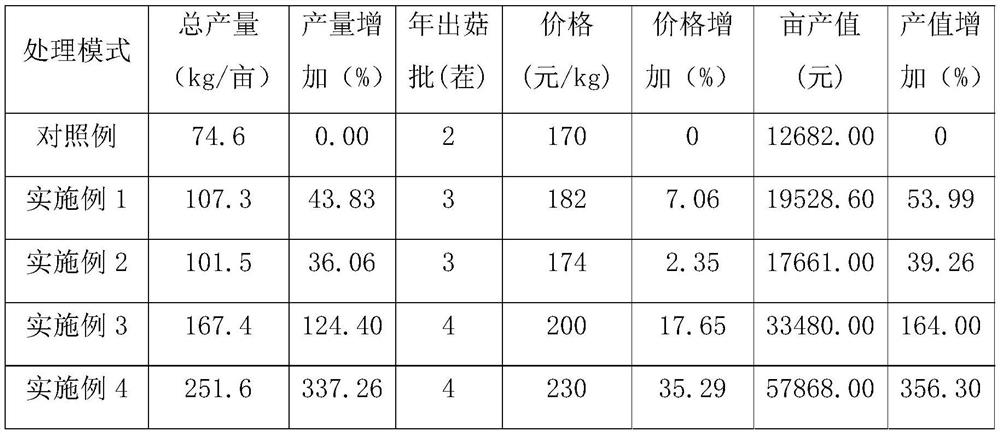Method for producing Russula by rotating strong roots in wild woodland and controlling surface temperature and humidity
A technology of surface temperature and russula, which is applied in botany equipment and methods, mushroom cultivation, plant protection covers, etc., can solve the problems of unsuitable habitat conditions for the growth of bacteria, decreased vigor of russula, and inability of russula to survive, etc. problem, to achieve the effect of maintaining strong root system for a longer period of time, stable growth and survival rate, and ensuring normal growth
- Summary
- Abstract
- Description
- Claims
- Application Information
AI Technical Summary
Problems solved by technology
Method used
Image
Examples
Embodiment 1
[0038]A method for producing russula by controlling soil moisture in the wild woodland. From January to February every year, a sprinkler net is erected horizontally on the ground of the russula forest, the length is less than 15m, and the upper and lower lines are connected to each other. The water pump is pumped from the reservoir in the valley, or connected to the reservoir dug on the top of the mountain; from March to December every year, when the soil humidity of 1-6cm of the topsoil of the forest land is lower than 40%, spray water to increase humidity, and each spray When watering, the surface soil humidity of the woodland reaches 80%, stop water spraying, and ensure that the surface soil humidity of the woodland is between 40-80%.
Embodiment 2
[0040] A method for producing Russula in the wild woodland by controlling the surface temperature. From January to February each year, a heat-insulating film support is erected on the ground of the Russula forest with a support. The height of the support is more than 15cm from the litter layer, and the row spacing is The width is less than 10m, and the length is less than 15m; during the period of March-May and September-December, when the temperature is lower than 16°C in the depth of 3cm of the topsoil of the forest, cover the insulation film and use physical objects around it. Press it down, raise the temperature to 20-35°C by covering the insulation film, and open the two ends for 30-60 minutes at noon every day; when the surface temperature of the forest land is higher than 20°C, uncover the film without covering, after the cold air passes Peel off all the film.
Embodiment 3
[0042] A method for producing Russula russula by rotating strong roots in the field and controlling surface temperature and humidity. Water spraying nets are set up and thermal insulation films are covered to control the soil humidity and surface temperature of the forest. The steps of the method are as follows:
[0043] (1) Set up the water spray net and cover the thermal insulation film in the wild woodland of russula
[0044] In February every year, a sprinkler network is erected horizontally on the ground of the wild woodland of Russula officinalis. The upper and lower lines of the sprinkler network are connected to each other. Use wooden support to erect thermal insulation film support horizontally in the woodland, the height of the support is more than 15cm from the litter layer, the row spacing is less than 10m in width and less than 15m in length, and then covered with insulation film;
[0045] (2) Control the soil moisture in the woodland
[0046] From March to Decem...
PUM
 Login to View More
Login to View More Abstract
Description
Claims
Application Information
 Login to View More
Login to View More - R&D
- Intellectual Property
- Life Sciences
- Materials
- Tech Scout
- Unparalleled Data Quality
- Higher Quality Content
- 60% Fewer Hallucinations
Browse by: Latest US Patents, China's latest patents, Technical Efficacy Thesaurus, Application Domain, Technology Topic, Popular Technical Reports.
© 2025 PatSnap. All rights reserved.Legal|Privacy policy|Modern Slavery Act Transparency Statement|Sitemap|About US| Contact US: help@patsnap.com

